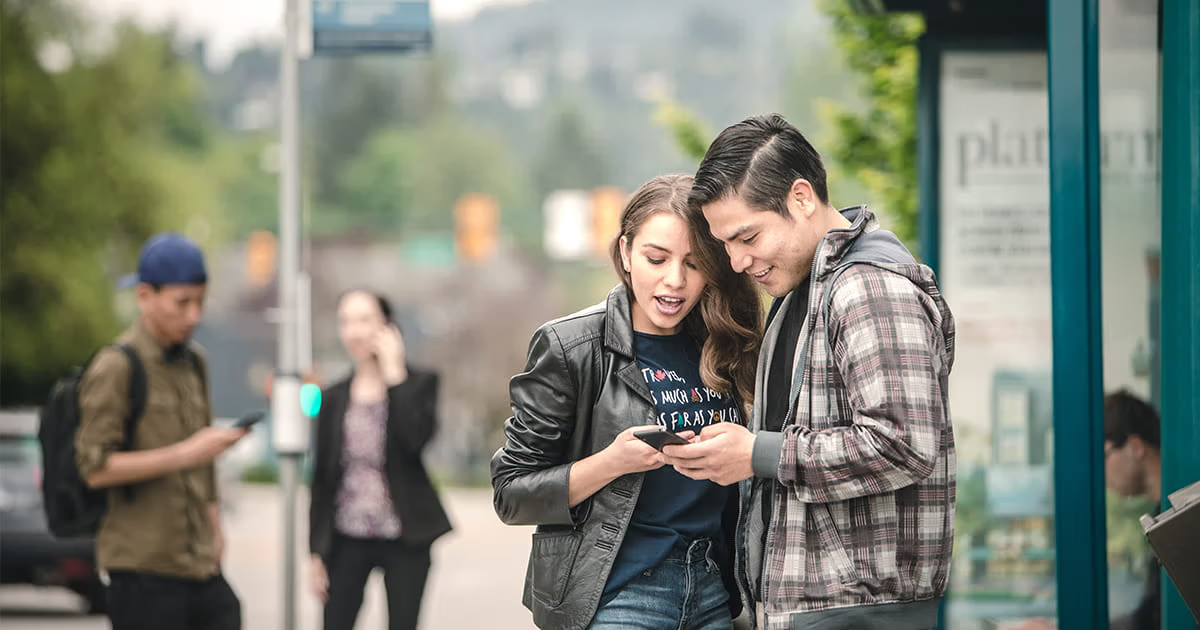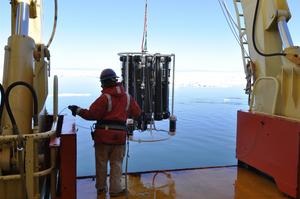GREENWOOD, Ind. – Texas Tech graduate student Macy Blackburn was named a College Sports Communicators (CSC) First Team Academic All-American while GK Faith Nguyen and MF Sam Courtwright took home second team honors, the organization announced…
Blog
-
Drug turns lung cells into slow-release antibiotic depots
A new designer drug that turns lung immune cells into slow-release antibiotic dispensers can clear a lethal pneumonia infection in mice, researchers report.
In the study, researchers created a compound known as a prodrug, an…
Continue Reading
-

Ford to Represent Singapore at World Athletics Cross Country Championships
MONACO – Faith Ford was selected to race for her home country of Singapore at the 46th World Athletics Cross Country Championships, slated for Jan. 10, 2026, in Tallahassee, Fla.
More than 500 athletes from over 60 countries are set to…Continue Reading
-

Providence mayor says team investigating Brown shooting is focused and working well – NPR
- Providence mayor says team investigating Brown shooting is focused and working well NPR
- Removal of Uzbekistanis from the United States U.S. Embassy in Uzbekistan (.gov)
- An aspiring neurosurgeon and a campus Republican died in the Brown campus…
Continue Reading
-
APRA imposes additional licence conditions on Equity Trustees Superannuation Limited
The Australian Prudential Regulation Authority (APRA) has imposed additional licence conditions on Equity Trustees Superannuation Limited (ETSL) to address prudential concerns relating to its investment governance frameworks and practices, including oversight of platform investment options made available to members.
ETSL acts as trustee for 11 registrable superannuation entities (RSEs) and has approximately 649,000 member accounts and over $37 billion in funds under management.
The additional licence conditions follow APRA’s recent thematic review of the investment governance, strategic planning and member outcomes practices of superannuation trustees that offer platforms (‘Platform Trustees’). Broadly, the review identified deficiencies in ETSL’s onboarding processes and practices, including adequacy of investment selection criteria and due diligence, as well as investment option monitoring and reporting frameworks, and management of conflicts of interest.
Specifically, APRA’s review of ETSL identified concerns regarding:
- onboarding of new investment options to ensure they are assessed consistently, are in the best financial interests of members, and appropriately manage conflicts of interest;
- adequate knowledge, operational and investment due diligence undertaken in relation to new investment options;
- identifying key risks, and ensuring independent analysis of information received from investment managers and external research and rating agencies; and
- the adequacy of investment monitoring and reporting to identify and manage higher risk investment options.
Under the additional licence conditions, effective 18 December 2025, ETSL is required to:
- appoint an independent expert to undertake separate reviews of its platforms’ investment menus and investment governance framework;
- develop and implement an uplift plan to address identified gaps, and provide APRA with assurance or attestation that the remediation actions are complete and effective; and
- undertake a further review of its investment menu against the enhanced investment governance requirements to determine ongoing suitability of each investment option.
ETSL must also refrain from onboarding certain new high-risk investment options to its platform until an independent expert confirms the option has gone through the uplifted onboarding process and an accountable person attests that all reasonable steps were taken to ensure the option is in members’ best financial interests.
These actions build on APRA’s public letter of 7 October 2025, which indicated that APRA would escalate supervisory intensity as necessary to ensure that appropriate steps are being taken by Platform Trustees to lift investment governance and member outcomes practices.
Deputy Chair Margaret Cole said: “APRA reiterates robust investment governance, including in relation to onboarding and monitoring of platform investment options, is critical to safeguard the interests of members. The accountabilities of trustees are the same irrespective of their business model and cannot be outsourced.”
APRA will continue to coordinate closely with ASIC on the regulatory response to weaknesses identified in Platform Trustees.
Continue Reading
-

TransLink offering free transit on New Year’s Eve
Customers ride for free starting at 5 p.m. on December 31
NEW WESTMINSTER, BC – TransLink is offering free transit for all services across Metro Vancouver this New Year’s Eve, from 5 p.m. on Wednesday, December 31 until 5 a.m. on Thursday, January 1.
During these hours, fare gates at SkyTrain and SeaBus stations will remain open. Customers will not be required to tap their Compass Cards or use other payment methods on all modes of transit. Customers who begin trips before 5 p.m. are advised to tap out as normal to ensure they’re charged the correct fare.
New Year’s Eve (December 31) service details:
- Buses will operate on an extended weekday schedule, with 52 additional buses throughout the system and extra service on select routes.
- SkyTrain service will operate on an extended weekday schedule.
- Last train from Waterfront to King George at 2:16 a.m.
- Last train from Waterfront to Lougheed Town Centre at 2:11 a.m.
- Last train from Waterfront to Production Way–University at 1:40 a.m.
- Last train from VCC–Clark to Lafarge Lake–Douglas at 2:22 a.m. (until 2:30 a.m. to Lougheed Town Centre only)
- Last train from Waterfront to YVR–Airport at 2:08 a.m.
- Last train from Waterfront to Richmond–Brighouse at 2:15 a.m.
- SeaBus will be running on an extended weekday schedule, with service every 15 minutes until 1:22 a.m. and every 30 minutes until the last sailing from Waterfront Station at 2:22 a.m.
- NightBus routes will continue operating every 20 to 30 minutes from downtown Vancouver after SkyTrain and SeaBus service ends.
- NightBus runs throughout the night in key areas of North Vancouver, UBC, Vancouver, Richmond, New Westminster, Surrey, Burnaby, SFU, Coquitlam, and Port Moody.
- West Coast Express will be operating on a weekday schedule.
- The 5:30 and 6:20 p.m. trains leaving Waterfront Station will be free.
The TransLink Customer Service Centre, Access Transit Customer Care Office, and Lost Property Office will be open on December 31. The Lost Property Office will close at 2 p.m.
Additional SkyTrain staff, Transit Supervisors, Transit Police, and Transit Security officers will be on the system to direct and assist customers. Plan your journey with Trip Planner, sign up for Transit Alerts, follow TransLink on X @TransLink, or call Customer Information at 604.953.3333.
Media contact:
TransLink Media Relations
E: media@translink.ca
Continue Reading
-

James Webb Space Telescope confirms 1st ‘runaway’ supermassive black hole rocketing through ‘Cosmic Owl’ galaxies at 2.2 million mph: ‘It boggles the mind!’
Astronomers have made a truly mind-boggling discovery using the James Webb Space Telescope (JWST): a runaway black hole 10 million times larger than the sun, rocketing through space at a staggering 2.2 million miles per hour (1,000 kilometers…
Continue Reading
-

WPR Music new album of the week: ‘Cuban Christmas’ from hornist Sarah Willis
For this week’s new release, we visit Cuba for a Latin twist on some holiday favorites. It comes from British horn player Sarah Willis, who in 2001 became the first woman to join the brass section of the Berlin Philharmonic.
Since then,…
Continue Reading
-
Former automotive service operator penalised
18 December 2025
The Fair Work Ombudsman has secured a $135,000 penalty in court against the former operator of an Ultra Tune automotive service outlet in western Sydney.
The Federal Circuit and Family Court imposed the penalty against Fajloun Motor Group Pty Ltd, which operated the Ultra Tune franchise outlet in Yagoona before it closed.
The penalty was imposed in response to Fajloun Motor Group breaching laws relating to pay slips and employment records, and failing to comply with a Compliance Notice, which required it to back-pay entitlements owed to a worker.
Fajloun Motor Group employed the worker at the Yagoona Ultra Tune outlet on a casual basis in an automotive administration role between April 2022 and January 2023.
Fair Work Ombudsman Anna Booth said employers that failed to act on Compliance Notices needed to be aware they could face court-imposed penalties on top of having to back-pay workers.
“When Compliance Notices are not followed, we will continue to take legal action to ensure workers receive all their lawful entitlements,” Ms Booth said.
Ms Booth said the regulator would continue to enforce workplace laws, including those relating to pay slip and record-keeping, and take appropriate action to ensure these laws are complied with.
“Record-keeping is the bedrock of compliance and pay slips provide employees with the clarity they need about their pay. We expect every employer to follow laws requiring them to issue pay slips within one working day of each pay day and to make and keep accurate employment records for their employees.”
“Any employees with concerns about their pay or entitlements should contact the Fair Work Ombudsman for free assistance.”
The regulator investigated after receiving a request for assistance from the affected worker.
A Fair Work Inspector issued a Compliance Notice to Fajloun Motor Group in October 2023 after forming a belief the company had underpaid the worker’s minimum wages, casual loading, Saturday penalty rates and overtime rates, owed under the Vehicle Repair, Services and Retail Award 2020.
The company back-paid the worker only after the Fair Work Ombudsman commenced legal action.
Employers and employees can visit www.fairwork.gov.au or call the Fair Work Infoline on 13 13 94 for free advice and assistance about their rights and obligations in the workplace.
A free interpreter service is available on 13 14 50. Employees can also seek information from their employer or their union, if they are a member.
Employers can seek information from their employer association if they are a member, and also use the FWO’s pay calculator and Small Business Showcase.
The FWO provides a free online course to help employers understand what a Compliance Notice is and how to respond if they get one. The Compliance Notice course, among a suite of free interactive courses on offer for employers, managers and employees, is available in our online learning centre.
Continue Reading

